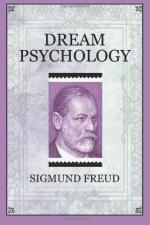I must assume that the sensory surface of consciousness devoted to the Forec. is rendered less excitable by sleep than that directed to the P-systems. The giving up of interest for the nocturnal mental processes is indeed purposeful. Nothing is to disturb the mind; the Forec. wants to sleep. But once the dream becomes a perception, it is then capable of exciting consciousness through the qualities thus gained. The sensory stimulus accomplishes what it was really destined for, namely, it directs a part of the energy at the disposal of the Forec. in the form of attention upon the stimulant. We must, therefore, admit that the dream invariably awakens us, that is, it puts into activity a part of the dormant force of the Forec. This force imparts to the dream that influence which we have designated as secondary elaboration for the sake of connection and comprehensibility. This means that the dream is treated by it like any other content of perception; it is subjected to the same ideas of expectation, as far at least as the material admits. As far as the direction is concerned in this third part of the dream, it may be said that here again the movement is progressive.
To avoid misunderstanding, it will not be amiss to say a few words about the temporal peculiarities of these dream processes. In a very interesting discussion, apparently suggested by Maury’s puzzling guillotine dream, Goblet tries to demonstrate that the dream requires no other time than the transition period between sleeping and awakening. The awakening requires time, as the dream takes place during that period. One is inclined to believe that the final picture of the dream is so strong that it forces the dreamer to awaken; but, as a matter of fact, this picture is strong only because the dreamer is already very near awakening when it appears. “Un reve c’est un reveil qui commence.”
It has already been emphasized by Dugas that Goblet was forced to repudiate many facts in order to generalize his theory. There are, moreover, dreams from which we do not awaken, e.g., some dreams in which we dream that we dream. From our knowledge of the dream-work, we can by no means admit that it extends only over the period of awakening. On the contrary, we must consider it probable that the first part of the dream-work begins during the day when we are still under the domination of the foreconscious. The second phase of the dream-work, viz. the modification through the censor, the attraction by the unconscious scenes, and the penetration to perception must continue throughout the night. And we are probably always right when we assert that we feel as though we had been dreaming the whole night, although we cannot say what. I do not, however, think it necessary to assume that, up to the time of becoming conscious, the dream processes really follow the temporal sequence which we have described, viz. that there is first the transferred dream-wish, then the distortion




